Ford, Toyota to Collaborate on Developing New Hybrid System for Light Trucks, SUVs
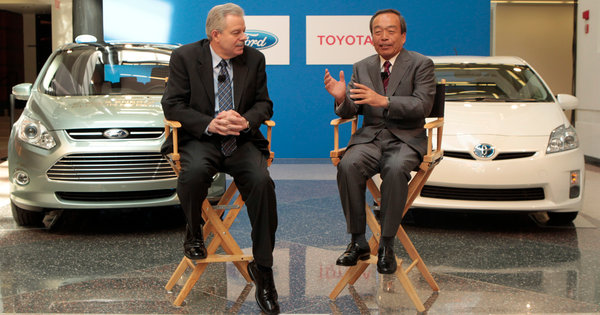 Dearborn, Mich.– Ford Motor Company and Toyota Motor Corporation – the world’s two leading manufacturers of hybrid vehicles – today announced they will equally collaborate on the development of an advanced new hybrid system for light truck and SUV customers.
Dearborn, Mich.– Ford Motor Company and Toyota Motor Corporation – the world’s two leading manufacturers of hybrid vehicles – today announced they will equally collaborate on the development of an advanced new hybrid system for light truck and SUV customers.
Ford and Toyota have signed a memorandum of understanding (MOU) on the product development collaboration, with the formal agreement expected by next year.
Both companies have been working independently on their own future-generation rear-wheel drive hybrid systems. The two now have committed to collaborate as equal partners on a new hybrid system for light trucks and SUVs. This new hybrid powertrain will bring the full hybrid experience of greater fuel efficiency to a new group of truck and SUV customers without compromising the capability they require in their vehicles. Ford and Toyota believe that their collaboration will allow them to bring these hybrid technologies to customers sooner and more affordably than either company could have accomplished alone.
“This agreement brings together the capability of two global leaders in hybrid vehicles and hybrid technology to develop a better solution more quickly and affordably for our customers,” said Derrick Kuzak, Ford group vice president, Global Product Development. “Ford achieved a breakthrough with the Ford Fusion Hybrid, and we intend to do this again for a new group of truck and SUV buyers – customers we know very well.”
Takeshi Uchiyamada, Toyota executive vice president, Research & Development, said: “In 1997, we launched the first-generation Prius, the world’s first mass-produced gasoline-electric hybrid. Since then, we have sold about 3.3 million hybrid vehicles. We expect to create exciting technologies that benefit society with Ford – and we can do so through the experience the two companies have in hybrid technology.”
The two companies also agreed to work together on enablers to complement each company’s existing telematics platform standards, helping bring more Internet-based services and useful information to consumers globally.
Under the MOU agreement, the two companies will bring the best of their independently developed hybrid powertrain technology and knowledge to a new co-developed hybrid system, which will be used in rear-wheel-drive light trucks arriving later this decade. Specifically, Ford and Toyota will:
• Jointly develop as equal partners a new rear-wheel drive hybrid system and component technology for light trucks and SUVs
• Independently integrate the new hybrid system in their future vehicles separately
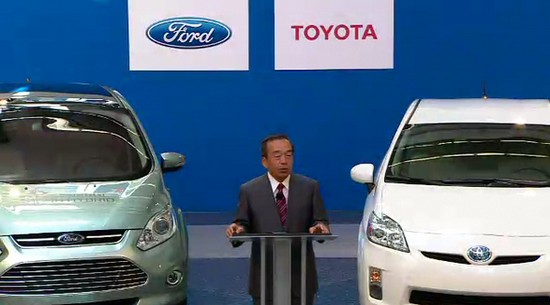
For years, both Ford and Toyota have been working independently on similar new rear-wheel-drive hybrid systems aimed at delivering higher fuel economy in light trucks and SUVs. When the two companies began discussing this potential collaboration, they discovered how quickly they were able to find common ground.
“By working together, we will be able to serve our customers with the very best affordable, advanced powertrains, delivering even better fuel economy,” said Ford President and CEO Alan Mulally. “This is the kind of collaborative effort that is required to address the big global challenges of energy independence and environmental sustainability.”
Toyota President Akio Toyoda added: “Toyota is extremely proud to join Ford in developing a hybrid system for pickup trucks and SUVs. Not only is this tie-up clearly one aimed at making automobiles ever better, it should also become an important building block for future mobility in the U.S. By building a global, long-term relationship with Ford, our desire is to be able to continue to provide people in America automobiles that exceed their expectations.”
This rear-wheel-drive hybrid system will be based on an all-new architecture to deliver the capability truck and SUV customers demand while providing greater fuel economy.
While the rear-wheel-drive hybrid system will share significant common technology and components, Ford and Toyota will individually integrate the system into their own vehicles. Each company also will determine the calibration and performance dynamics characteristics of their respective light pickups and SUVs.
In addition, as telematics plays an increasingly more important role in the in-car experience, both companies have agreed to collaborate on standards and technologies needed to enable a safer, more secure and more convenient in-car experience for next-generation telematics systems. The telematics collaboration relates only to standards and technologies, and each company will continue to separately develop their own in-vehicle products and features.
“Ford has made tremendous progress in the area of telematics,” Kuzak said. “We have unique and very good solutions today with SYNC and MyFordTouch. Working together on in-vehicle standards can only enhance our customers’ experience with their vehicles.”
Uchiyamada added:“Toyota has also invested heavily in telematics in various countries around the world, with services like the G-BOOK and G-Link. In the U.S., we have just introduced the accessible, easy-to-use Entune. By sharing our know-how and experience, we would like to offer even better telematics services in the future.”


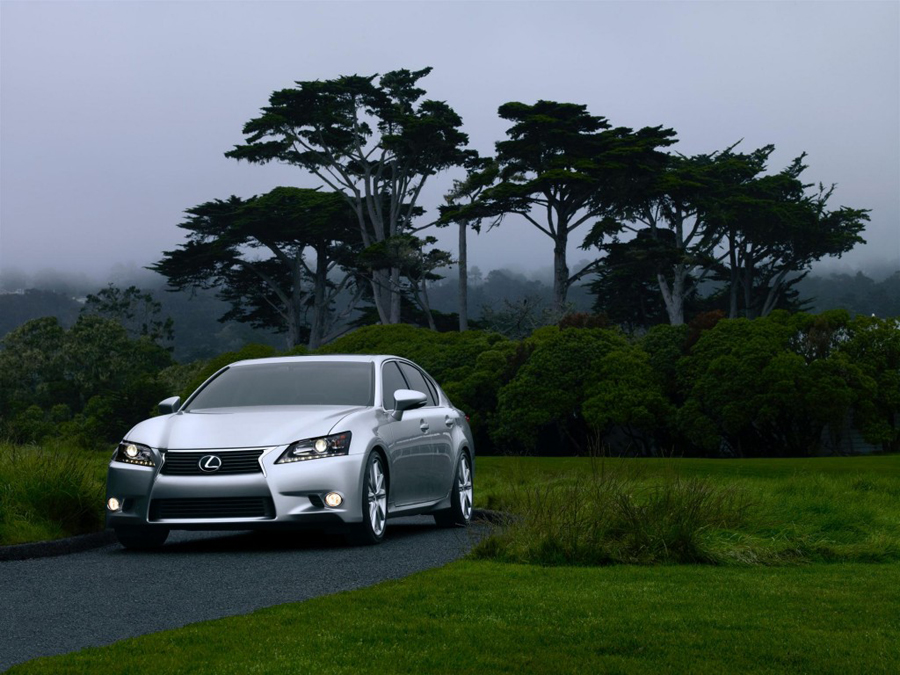 PEBBLE BEACH, Calif. – Lexus today unveiled the all-new GS 350 at a press conference in conjunction with the Pebble Beach Concours d’Elegance. The new 2013 GS combines bold, dynamic styling, precise handling, innovative technology, and a spacious interior. In addition to the GS 350, the 2013 GS 350 hybrid model and an available F-Sport package will be launched in early 2012 with further details to follow later this year.
PEBBLE BEACH, Calif. – Lexus today unveiled the all-new GS 350 at a press conference in conjunction with the Pebble Beach Concours d’Elegance. The new 2013 GS combines bold, dynamic styling, precise handling, innovative technology, and a spacious interior. In addition to the GS 350, the 2013 GS 350 hybrid model and an available F-Sport package will be launched in early 2012 with further details to follow later this year.
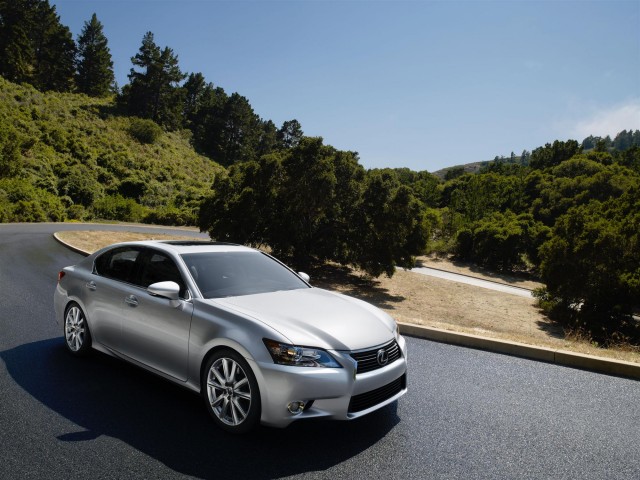
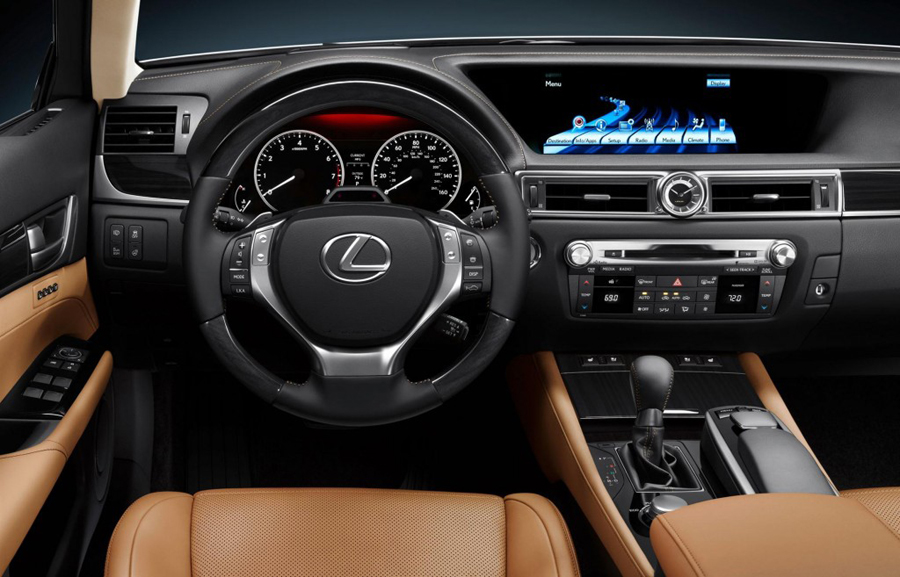
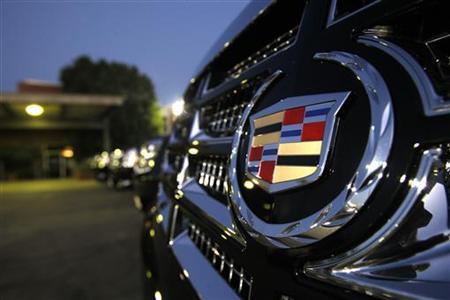 DETROIT, MI — General Motors Co. confirmed Wednesday it will build a luxury electric car based on the technology used in its Volt plug-in hybrid for Cadillac as the automaker also studies plans for an all-electric small car for its mainstream Chevrolet brand.
DETROIT, MI — General Motors Co. confirmed Wednesday it will build a luxury electric car based on the technology used in its Volt plug-in hybrid for Cadillac as the automaker also studies plans for an all-electric small car for its mainstream Chevrolet brand.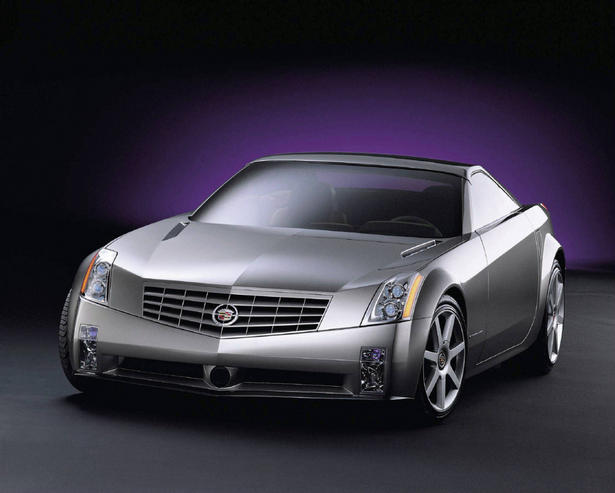
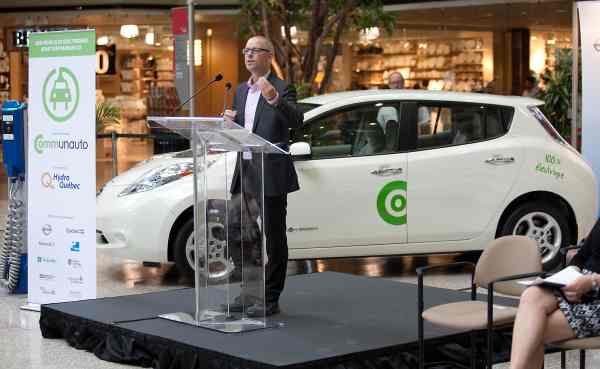 QUÉBEC CITY, QUE - Communauto, Hydro-Québec and Nissan Canada are proud to announce the launch of the largest North American all-electric carsharing service, and the first of its kind in Québec. The project will be rolled out until early 2012 , with 50 all-electric Nissan LEAFs added to Communauto's fleet, including 15 available today.
QUÉBEC CITY, QUE - Communauto, Hydro-Québec and Nissan Canada are proud to announce the launch of the largest North American all-electric carsharing service, and the first of its kind in Québec. The project will be rolled out until early 2012 , with 50 all-electric Nissan LEAFs added to Communauto's fleet, including 15 available today.